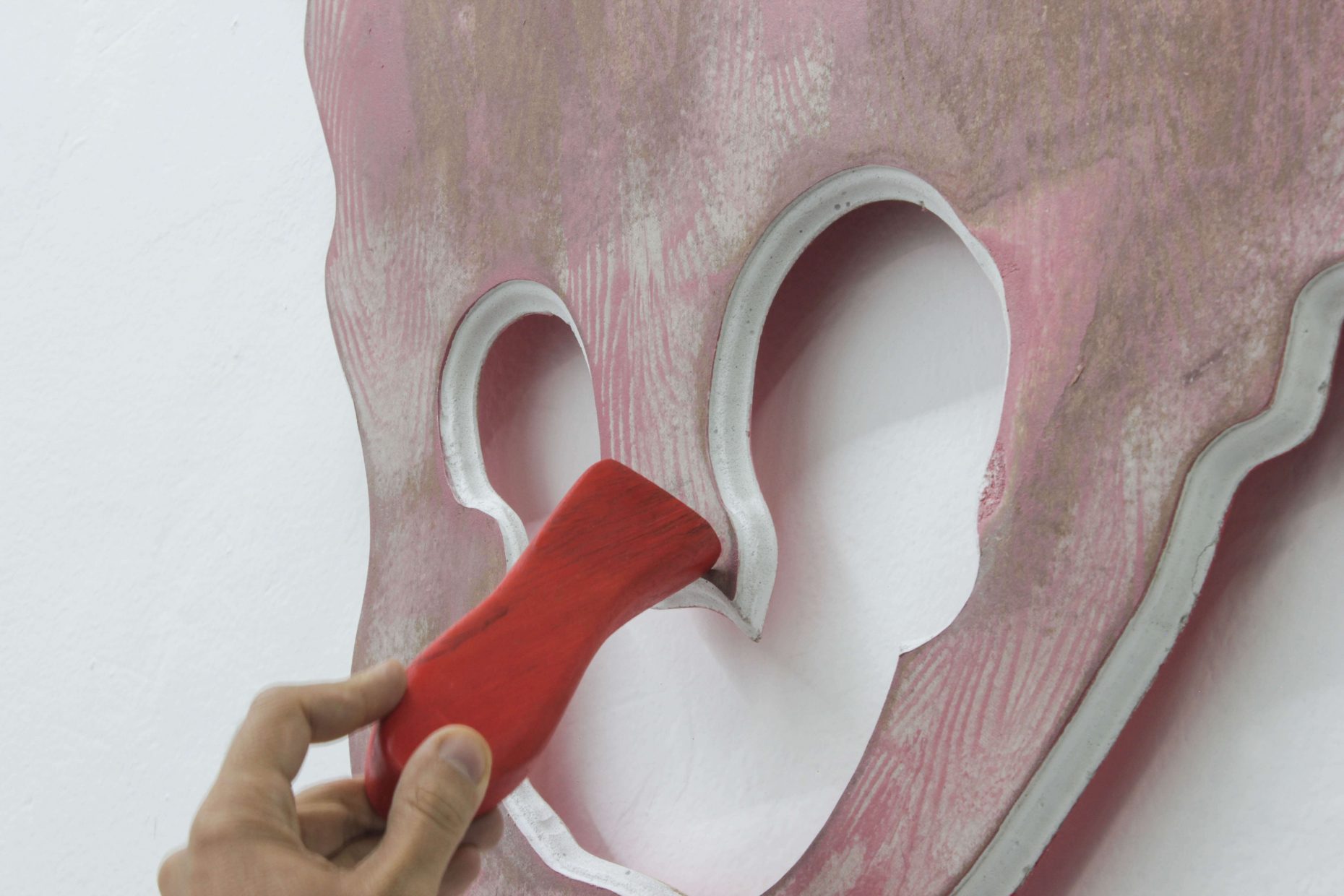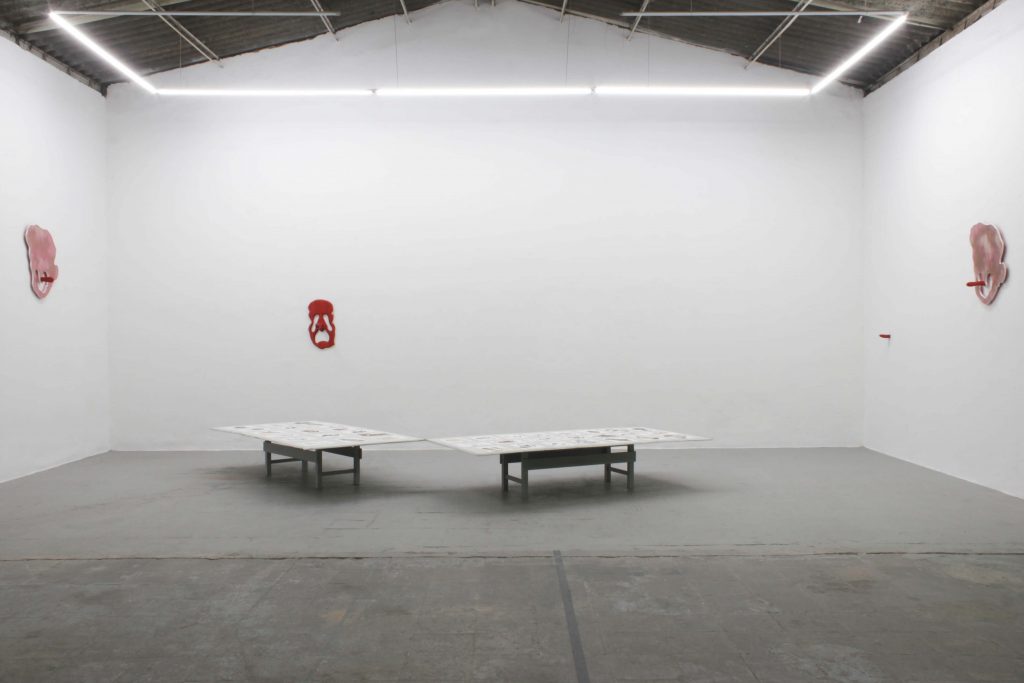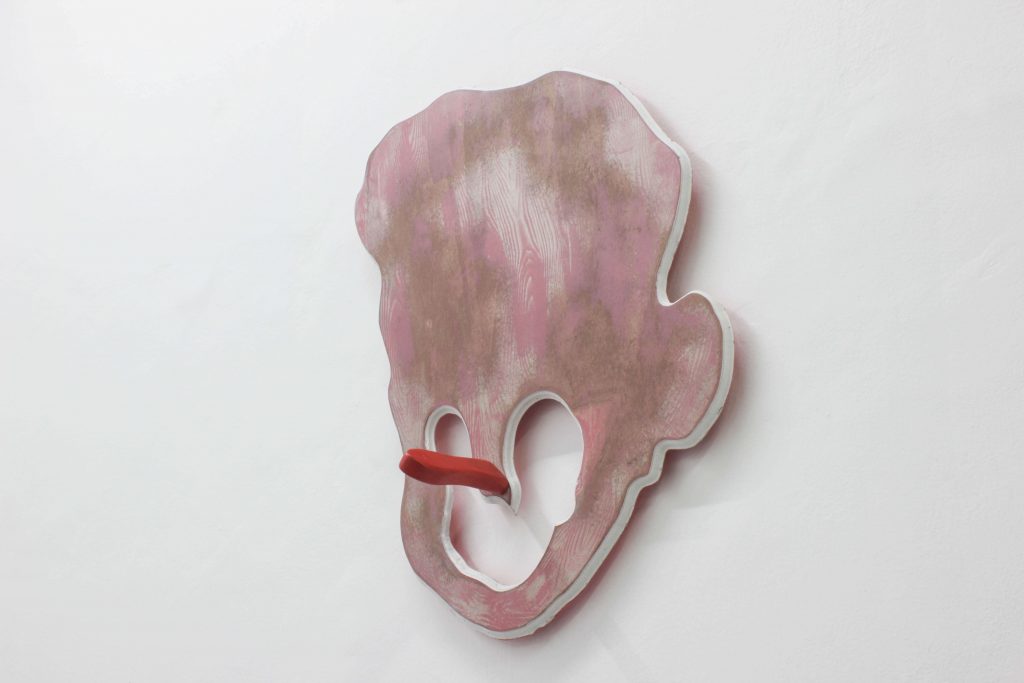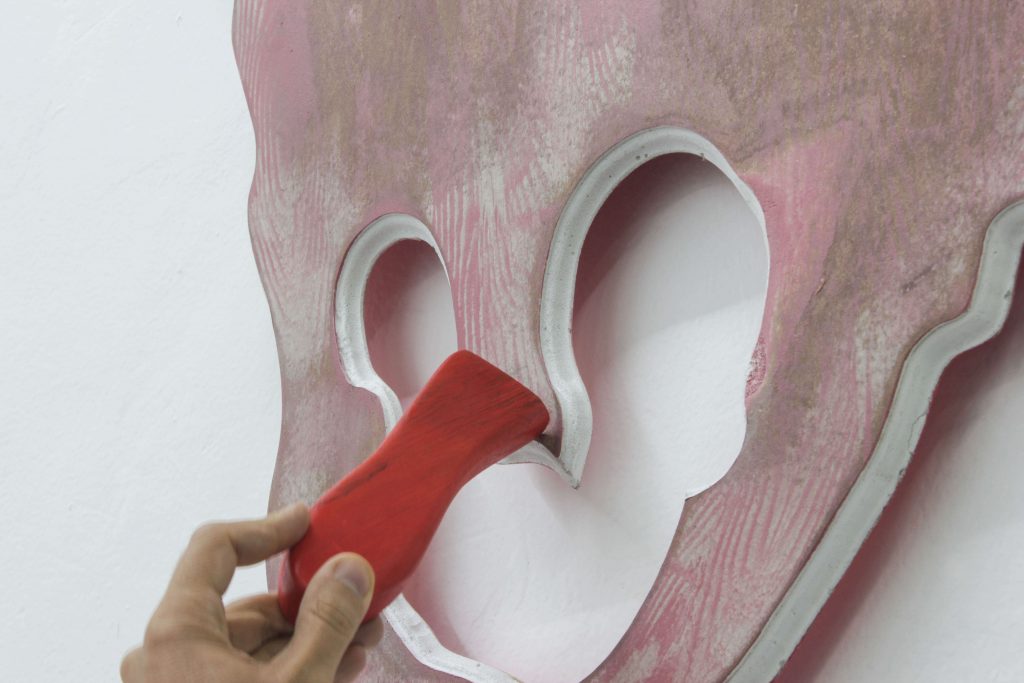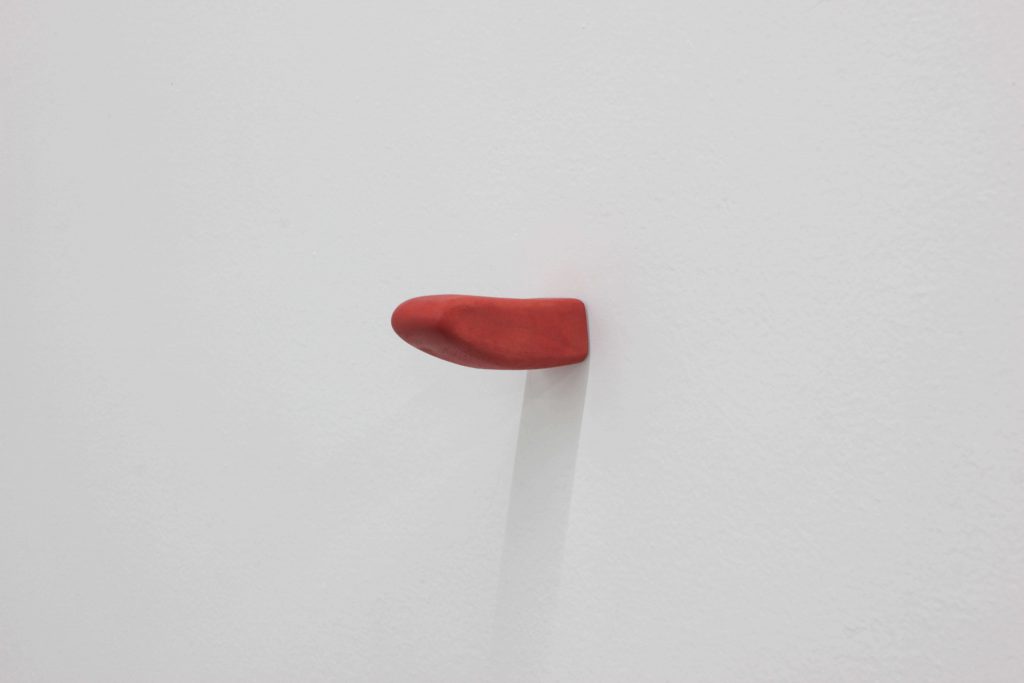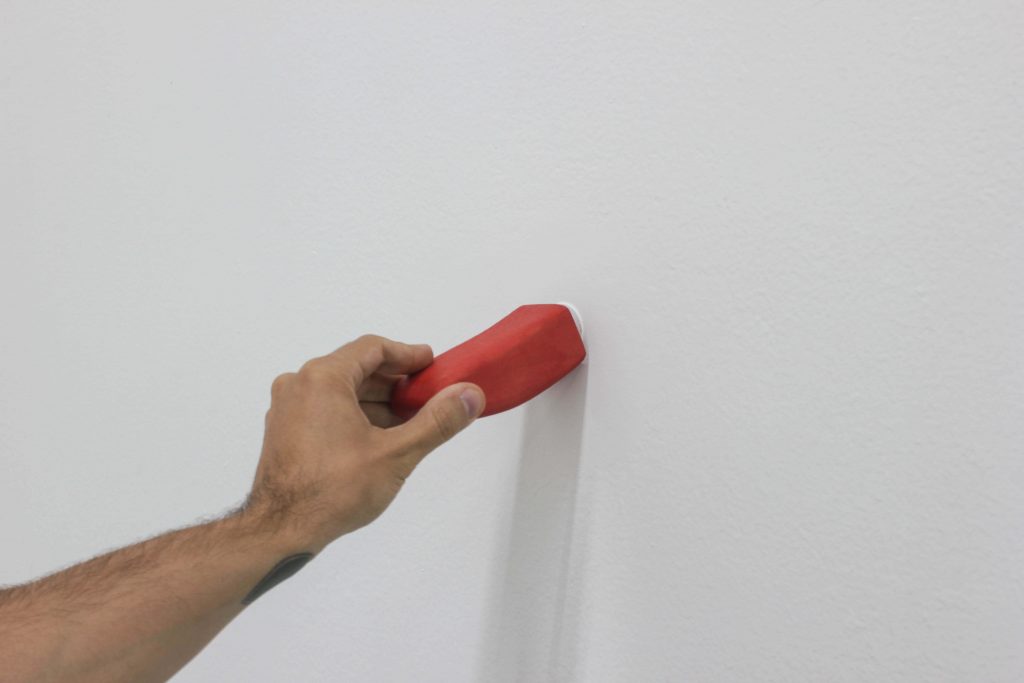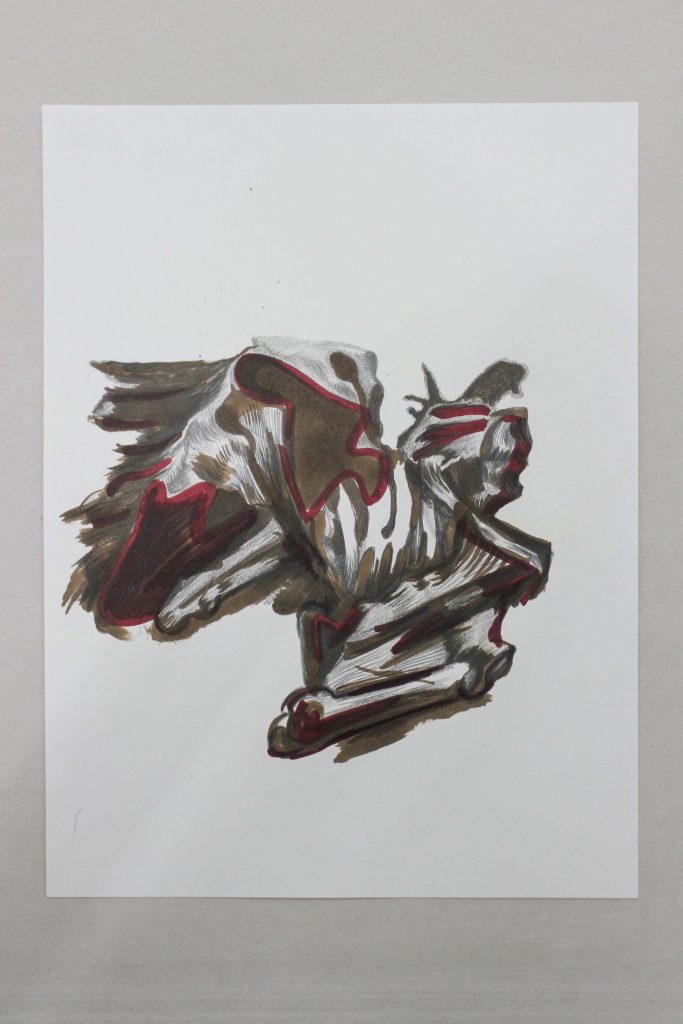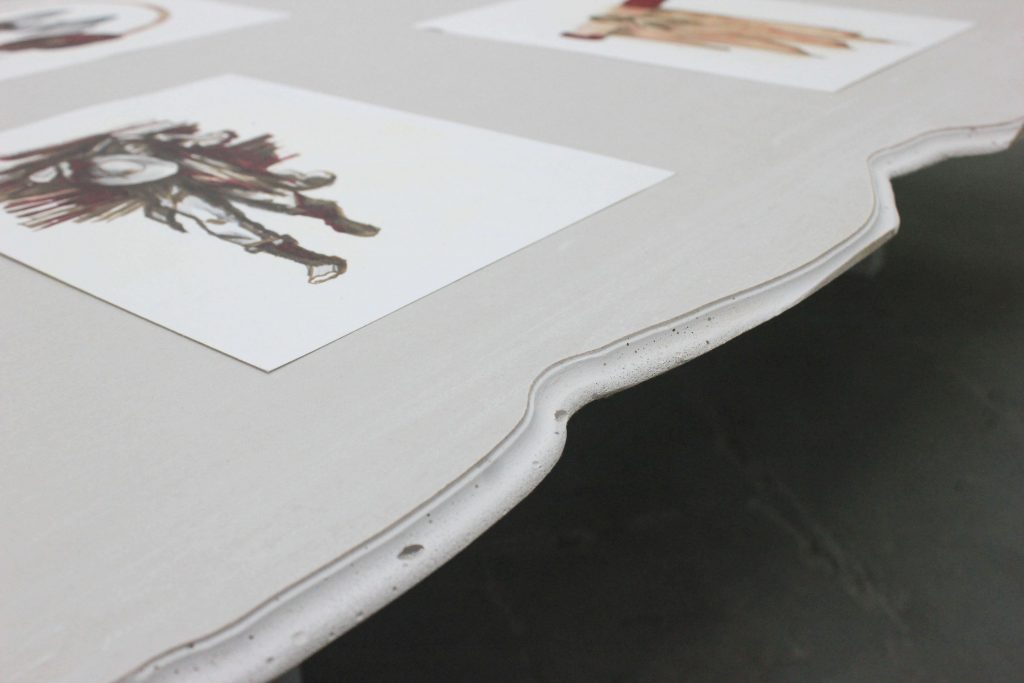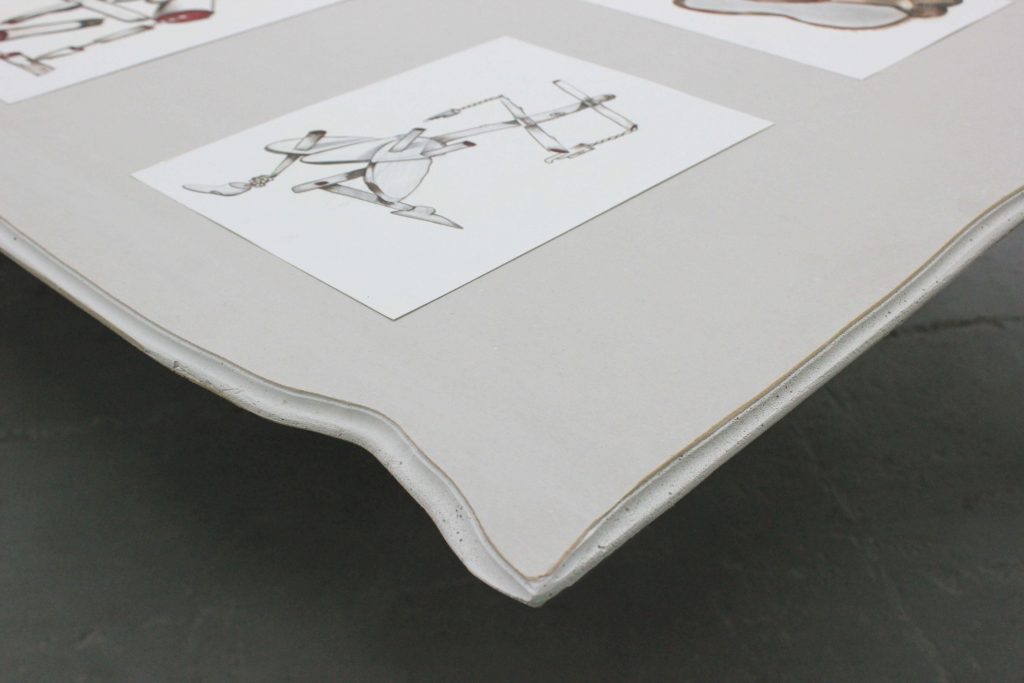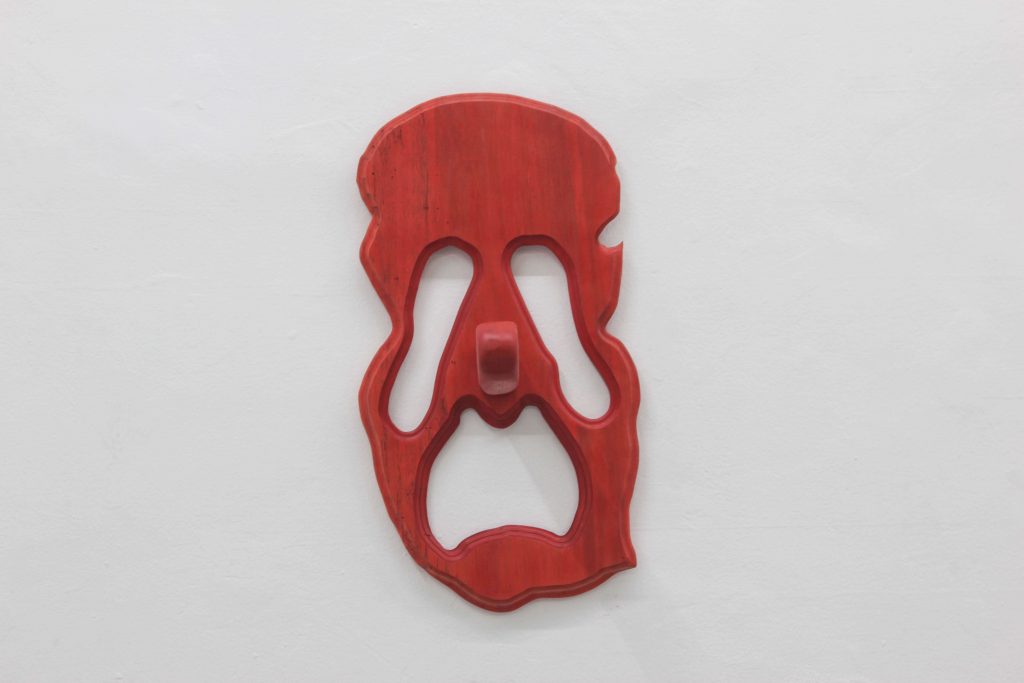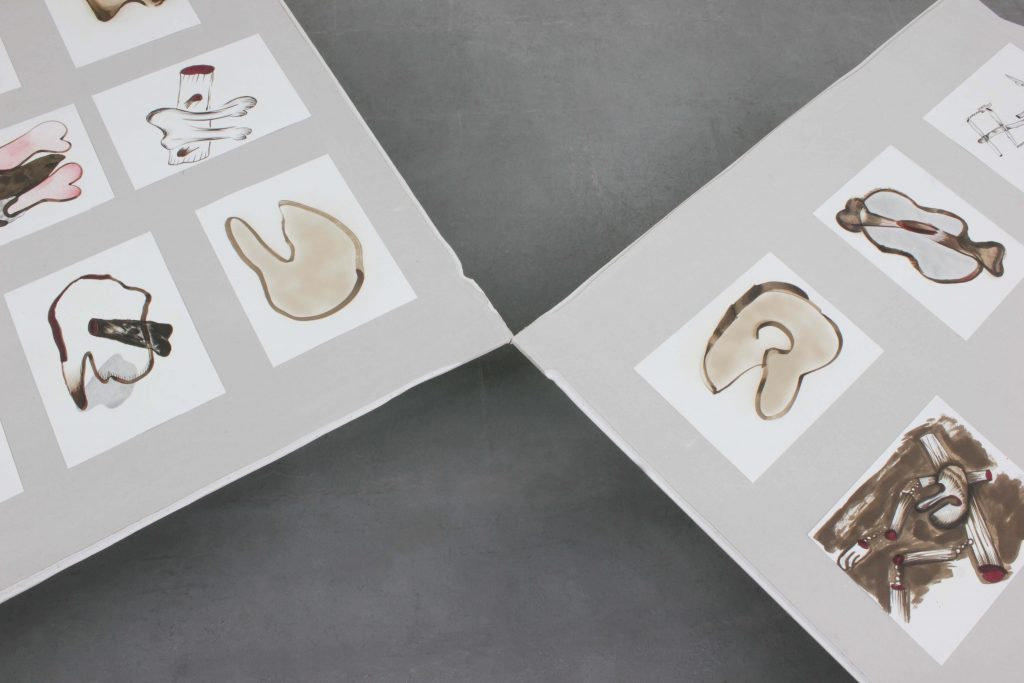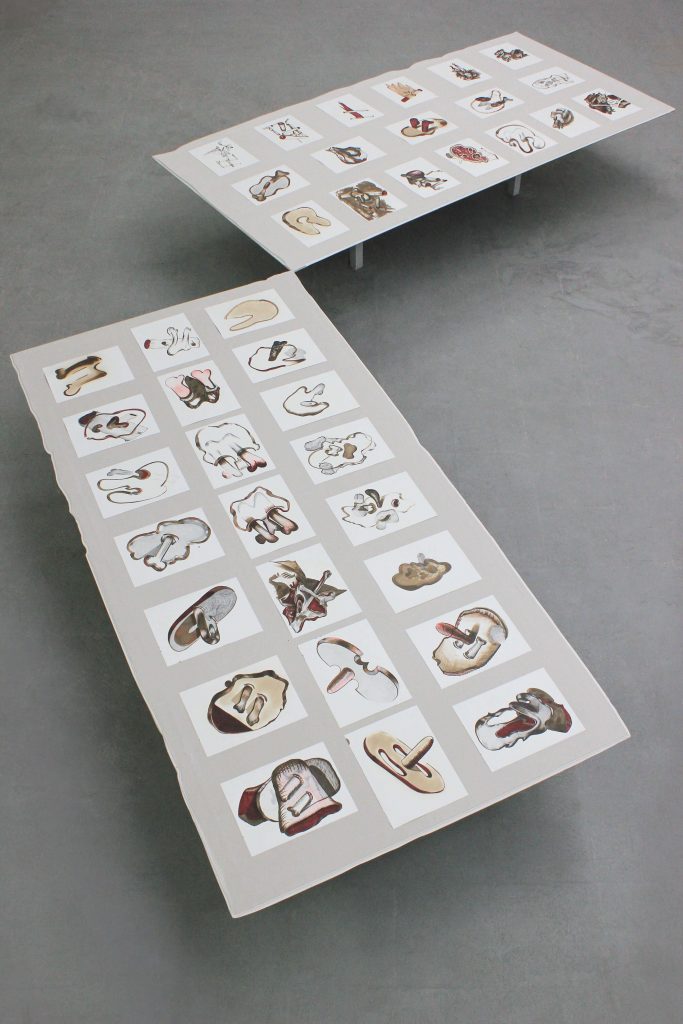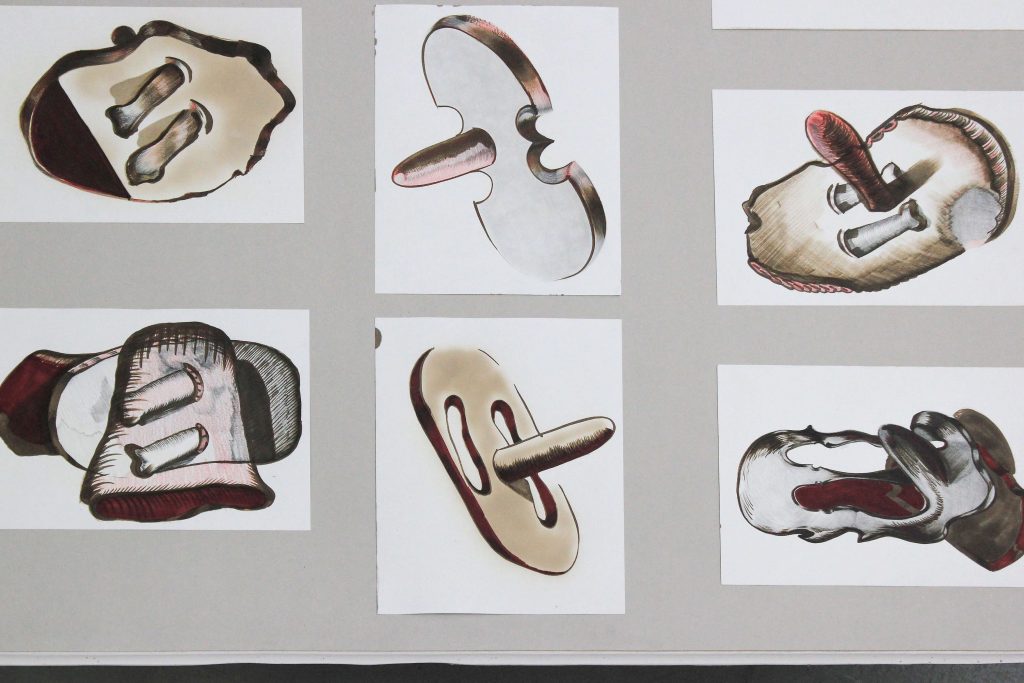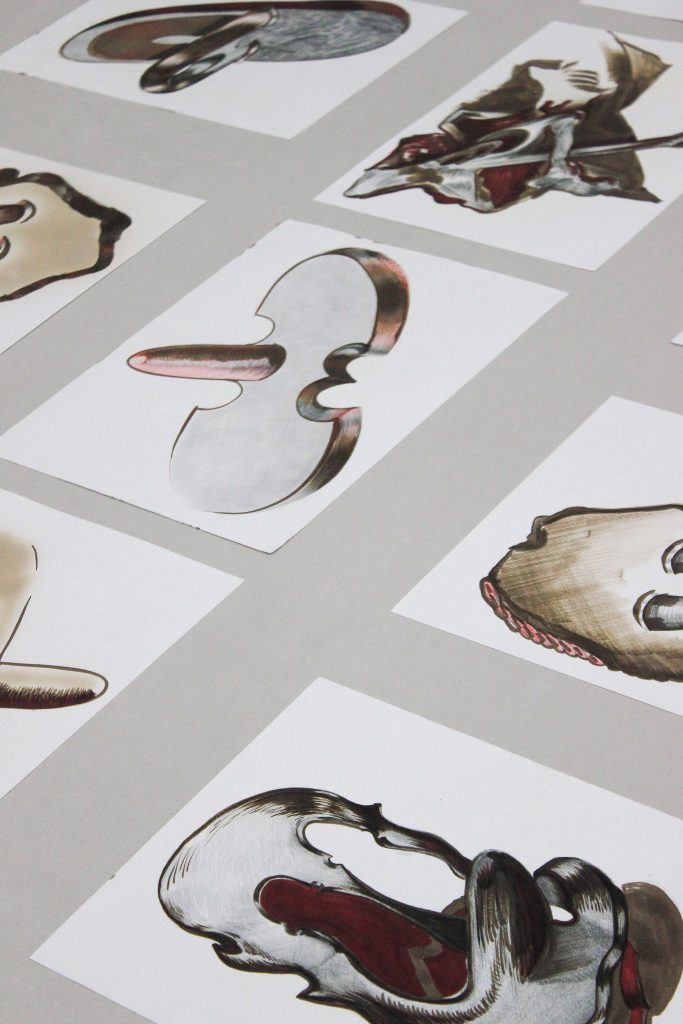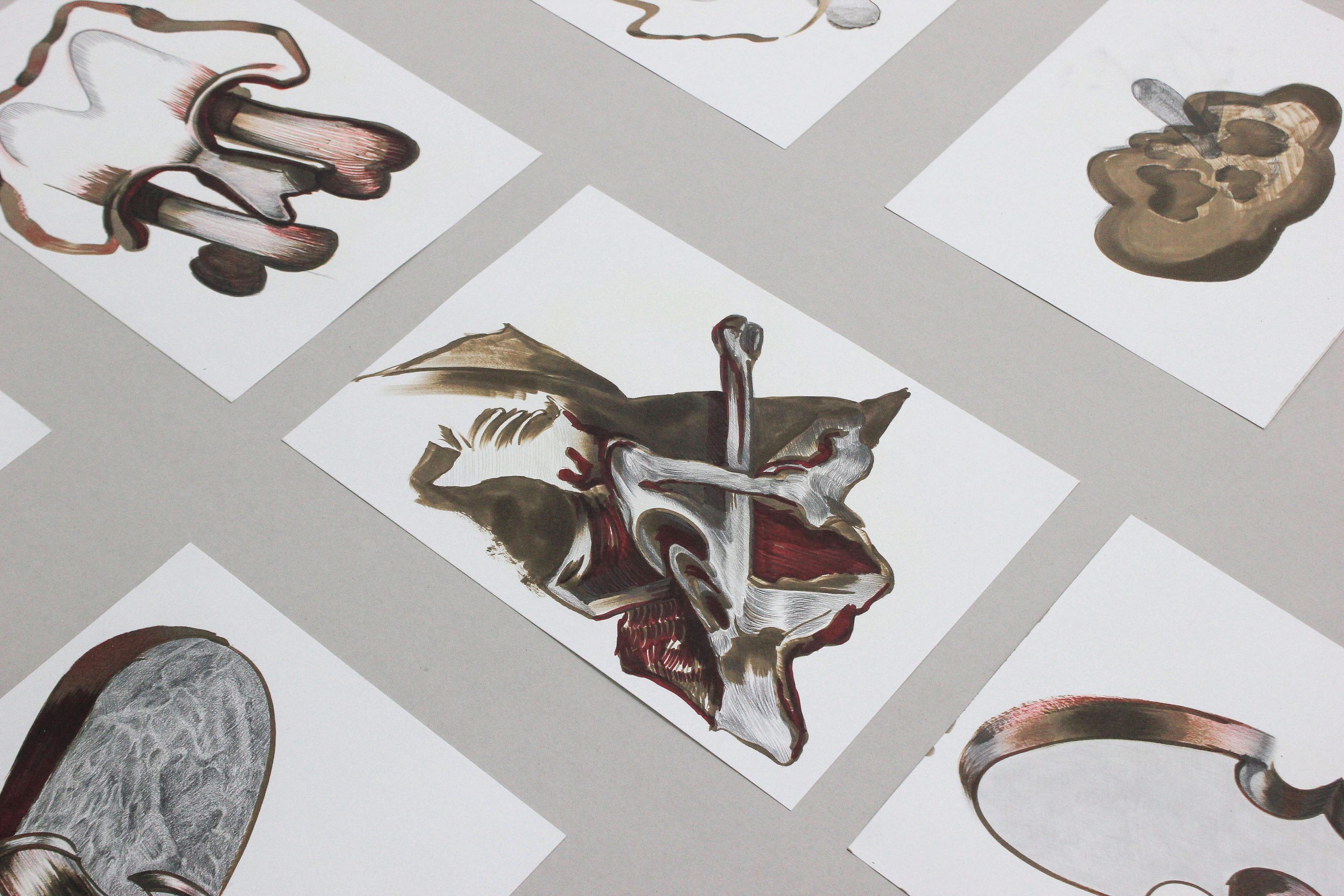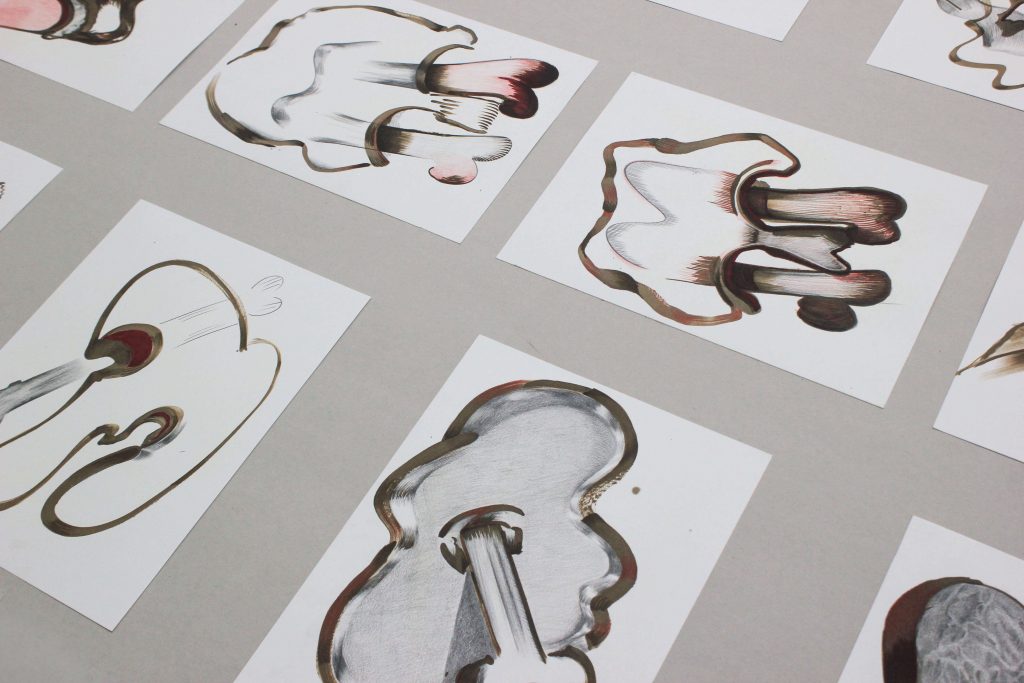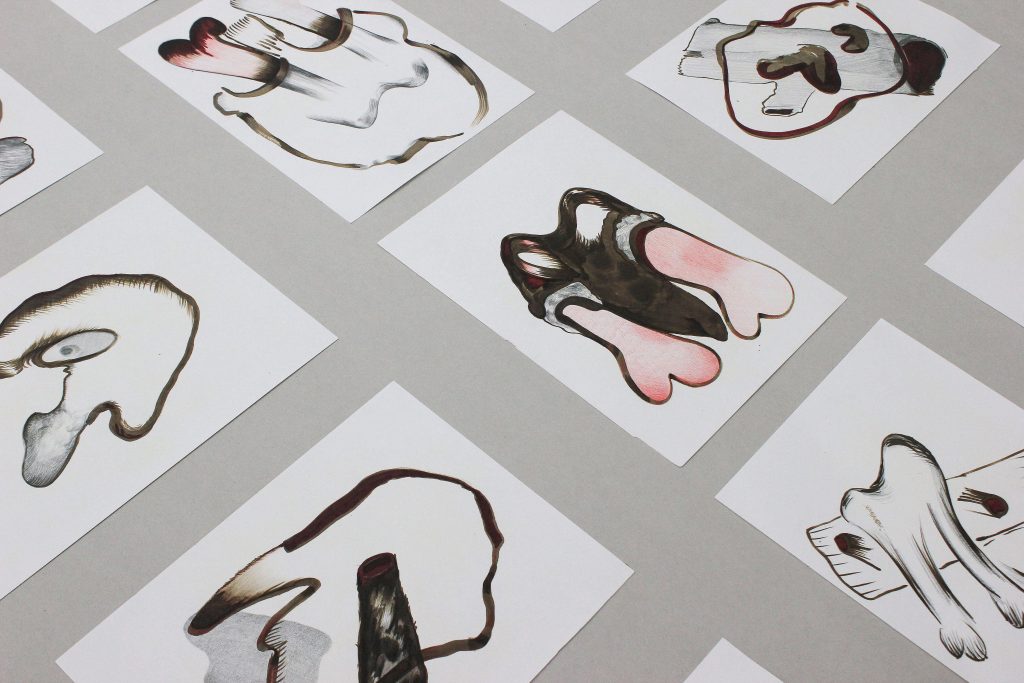Los inventados (The Invented), open studio at Estudio Hospital, Guadalajara, Mexico. June 2021.
Curated by Caroline Montenat.
—The eagle is a decorative and servile being. In its wings there is more heraldry than flight. (León Felipe)
Speaking about the male condition and its construction through popular culture was not at first sight, I think, the subject of the research conducted by Javier Fresneda (1).
However, the procedure operated by the artist and researcher, who is seeking to extirpate and caricaturize certain physical and symbolic elements taken from some
popular male characters, gave me the guidelines to understand this artistic production under this same premise.
My intention is to offer a reading of the works gathered in this exhibition insofar as they successfully make some points constituting an essay on masculinity; understood as
the study of deep and unconscious masculine patterns and archetypes that are revealed through the body (sexual attributes and reproductive functions), tales (myths,
ideals of virility) and the social behavior of gender (relationships with the masculine and feminine, and men’s education).
Based upon images of characters —real and fictional men dedicated to repressing themselves and supporting the toil of an imposed destiny— these artworks reconstitute in a caricatural and gestural way a typology of these violences exerted by combining stereotypical male figures: the king, deranged and doomed by the forced inbreeding of
their lineage; the woodsman, almost a beast of burden whose brutalized life is inevitably destined to suffer deficiencies; and the child-puppet, a continuous target of abuse and adult cynicism. From there, they protrude noses, deformed jaws, blue eyes, bones and meat (will they be from these characters or from a turkey?), which serve as matrices in an infinite combination.
It is important to note that Fresneda used as image archive the following pictorial and filmic works that belong to current popular Latin-American visual imagery: the cabinet
portraits of the kings of Spain (2) that commonly illustrate the colonial past of Ibero-America; Pinocchio’s main character as he is drawn in Walt Disney’s film (Dir. Ben Sharpsteen, 1940); and the character of Macario, the indigenous woodsman from the 1960 Mexican film (Dir. Roberto Gavaldón) masterfully personified by actor Ignacio López Tarso.
With all of this (I mean either a Spanish king, or Pinocchio or Macario), the virile ideal ends up being a tautology from which one cannot escape: in order to become a ‘real man’ one must overcome the adversities that are presented to him for the good and especially for the bad. There is no other way. “[…] the damage that comes with living by the man-toolbox rules is considerable. They even exceed the satisfaction that men can
get from successfully conforming to these norms, and thus being “real men.” (3)
Many studies have repeatedly pointed out to “violence (in its various expressions) as a faculty related to masculinity and its implicit implementation in boys, thus being repeated and accepted by society: “[…] Men build their identity on the axes of power and dominance that are, at the same time, a source of fear and pain for them. […] They learned that intimidation and fear are the resources to run authority which, at the same
time, keep them in the system of male privileges. […] From a sociocultural point of view, hegemonic societies have imposed their models of masculinity on the conquered,
who make efforts to reproduce them.” (4)
The drawings and sculptural pieces gathered here express the grotesqueness emerging from these male figures. The true fabric of the stories in which they are involved is woven with the ruin of the “real men”, of flesh and blood. Fresneda
invented, through the creation of templates, a method to unveil the monstrous and cruel facets that repeatedly mark these bodies. They are the same ones that reproduce
patterns difficult to understand or recognize, even when they appear to be as obvious as a red nose in the middle of the face.
This leads us, without a doubt, to a deep reflection on the power of images and stories that participate in the construction of identities of each gender and their deceptive
impositions.
—Caroline Montenat, 2021
Notes
(1) This production stems from Fresneda’s doctoral research in Art History, Theory and Criticism Program of UCSD, University of California in San Diego (USA) and subsequent plastic explorations carried out by Fresneda since 2019. His work explores models of materiality, space and heritage through the production of prototypes, platforms and events.
(2) In particular, the portraits of Carlos V and II, Felipe II, III, and IV, in which the representation and increment of certain physical peculiarities are very obvious, such as the ‘Habsburg jaw’ or ‘the Hapsburg lip’.The Habsburgs, or Spanish royal family, was the most extended and documented experiment in inbreeding after 200 years of marriages between cousins, nieces, and aunts. Being the last king of the dynasty, Carlos II was its most infamous victim. Carlos II’s ancestry was so tangled that his “consanguinity coefficient” (a figure that reflects the proportion of identical inherited genes) was higher than if he had been engendered by two brothers.
(3) Heilman, B., Barker, G. y Harrison, A. (2017). La caja de la masculinidad: un estudio sobre lo que significa ser hombre joven en Estados Unidos, el Reino Unido y México. Washington DC y Londres: Promundo-US y Unilever.
(4) Una mirada a la construcción de la identidad masculina en hombres jóvenes de la Ciudad de México. Jorge García-Villanueva; Jonathan Callejo García; Isaura López Segura.
Cuadernos Interculturales, vol. 8, núm. 14, 2010, pp. 197-225 Universidad de Playa AnchaViña del Mar, Chile. https://www.redalyc.org/pdf/552/55217005012.pdf
Credits
